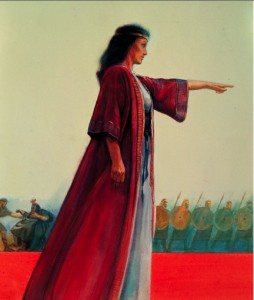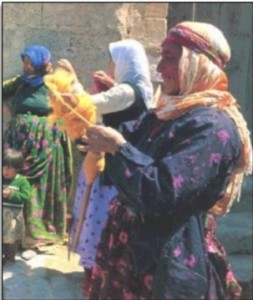Where Christianity and rabbinic Judaism have condemned Eve as lustful and evil, many modern feminists have discarded Eve. Compared to Lilith, “Adam’s First Wife” who is not mentioned in Genesis, Eve has been labeled docile and obedient to patriarchy. Continue reading Eve Speaks for Herself
Tag Archives: tree of life
Deborah and Her Tree
“You must destroy all the sites at which the nations you are to dispossess worshiped their gods, whether on lofty mountains and on hills or under any luxuriant tree” Deut. 12:2
Sacred Trees
What is the importance of these trees? After some research I learned that the
“phenomenon of a sacred tree, particularly one associated with a sacred site, is well known in a variety of cultures. A distinguished tree, especially one of great antiquity, might be looked upon as the ‘tree of life’ or as being ‘cosmic,’ its stump symbolizing the ‘navel of the earth’ and its top representing heaven. In this sense, it is a bridge between the human and the divine spheres, and it becomes an arena of divine-human encounter, an ideal medium of oracles and revelation. Trees may have also symbolized the protection or fertility the worshiper hoped to receive from a deity. Fertility cults flourished in connection with such trees, and this form of paganism proved attractive to many Israelites” (Sarna, p.91).
The Canaanite goddess Asherah is closely related to the sacred terebinth trees. Even etymologically the Hebrew words for “goddess” (elat), “terebinth tree” (ela or alla) and the two words for oak (elon and allon) are closely related (Ackerman, Asherah). It has been well known for some time that the Israelites embraced monotheism quite late in their history as evidenced by archaeological finds. Despite the fact that Israelites were forbidden to worship Asherah under the sacred Canaanite trees, “there are multiple indications in biblical tradition that many in ancient Israel did regard Asherah’s cult icon as an appropriate sacred symbol within the religion of YHWH,” (Ackerman, Asherah).
Deborah and the Sacred Tree
It is against this backdrop that I read about Deborah who sat under a “luxuriant tree” called “the Palm of Deborah.” From this location Deborah summoned the general Barak to march against Sisera, the general of Israelite’s oppressors. Then she acted as military mastermind for the ensuing battle. Continue reading Deborah and Her Tree
Women Who Made Veils for the Tabernacle and the Temple in Jerusalem
“And all the skilled women spun with their own hands, and brought what they had spun, in blue, purple, and crimson yarns, and in fine linen. And all the women who excelled in the skill spun the goat’s hair.” Ex. 35:25-26
After leaving Egypt, God directed Moses to prepare a portable sanctuary, a tabernacle. This became a sacred place where the wandering Hebrew people could commune with God. We learn in Exodus that skilled women prepared the woven materials needed for the tabernacle. Later these highly trained weaving women worked within the temple compound. In Hebrew, the word used for “skilled” is related to the word “wisdom.” Culturally, the Hebrews saw the technical abilities of artisans as a form of profound understanding. Thus we find that women’s traditional work of weaving was highly prized not just for the domestic and economic benefits but for religious and spiritual reasons as well. “When textiles were needed for ritual purposes, as in the case in the tabernacle texts, women’s skills in preparing fabrics and converting them to specific forms situates them in positions of social or religious prominence; it gives them a public role that has been little noticed” (Carol Meyers). Continue reading Women Who Made Veils for the Tabernacle and the Temple in Jerusalem



